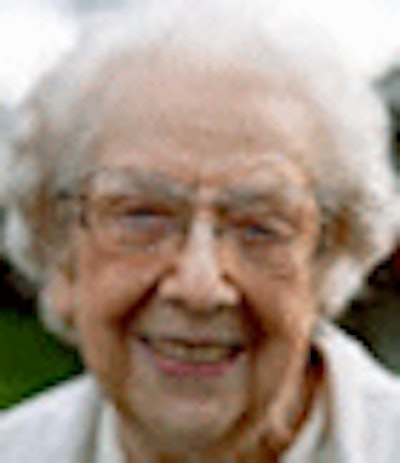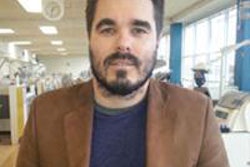
Is an elderly patient who is poorly dressed, has strong body odor and extremely poor oral hygiene, and is unwilling to speak in front of his or her caregiver sending you signals? Does the same hold true for an older person with broken denture prostheses or fractured and avulsed teeth?
You bet. The patient may well be neglected or abused, and you should investigate further, according to geriatric dentistry experts. It is important for every dentist to learn the signs of elder abuse and neglect, as dentists are often the first healthcare providers with the chance to catch these problems, they note.
|
Signs of elder abuse or neglect In his October 2008 JCDA article on the role of the dentist in recognizing elder abuse, Dr. Michael Wiseman describes what could be signs of abuse or neglect. They include the following: General
Physical neglect
Physical abuse
Psychological abuse
Financial abuse or neglect
|
It is also a dentist's obligation, according to the ADA Principles of Ethics and Code of Professional Conduct: "Dentists shall be obliged to become familiar with the signs of abuse and neglect and to report suspected cases to the proper authorities, consistent with state laws."
Unfortunately, elder abuse and neglect are typically given short shrift in dental education; usually far less than half of the two hours dedicated to all forms of abuse is spent on geriatric applications, according to Aldo Boccia, D.D.S., former president of the American Society for Geriatric Dentistry and a dentist in private practice in Toronto, Ontario. Underdetection is thus too often the rule; a 1991 survey of ADA members showed only 10.3% had knowledge of or experience dealing with elder abuse (Dentistry, December 1991, Vol. 11:4, pp. 12-14).
In the last decade, very few articles have been published on the specific subject of elder abuse and dentistry. One was written by Dr. Boccia and colleagues in 2001 (Special Care in Dentistry, July 2001, Vol. 21:4, pp. 141-146); another appeared in the October Journal of the Canadian Dental Association by Michael Wiseman, D.D.S., the chief of dentistry at Mount Sinai Hospital and a dentist in private practice in Côte Saint-Luc, Quebec (JCDA, October 2008, Vol. 74:8, pp. 715-720).
"Elder abuse is becoming more frequent as the population ages, and recognizing abuse is paramount in the protection of seniors," Dr. Wiseman noted in the JCDA article. "Dentists are in an ideal position to identify and signal suspected abuse, as they perform a thorough examination of the head and neck region and generally see their patients twice a year."
One theme underlies both articles, Dr. Boccia noted: While elder abuse and neglect can be harder to detect in older than in younger people, more needs to be done to help dentists recognize and address the problems.
"I feel the best method of training for detection and assessment of elder abuse and neglect would be by the universities and by the federal and state dental organizations. Some of this is being done, but not enough," Dr. Boccia told DrBicuspid.com.
"Our medical colleagues are far ahead of us with respect to the recognition of elder abuse, even though we are legally and ethically just as bound as they are to detect abuse," agreed Dr. Wiseman, who lectures across North America on the topic. "As much as we as a profession have increased our knowledge of child abuse, the recognition of elder abuse must be just as paramount. We may be treating the broken dentures, the cases of fractured teeth, etc., but we should always keep elder abuse and neglect in the back of our minds as a differential diagnosis."
What's it look like?
|
Useful questions In his article on elder abuse and neglect in Special Care in Dentistry, Dr. Aldo Boccia describes the steps dentists can take to determine whether abuse is taking place and, if so, who the abuser is. He notes that the caregiver can usually be convinced to leave the room during questioning by being asked to wait in the waiting room or go have a cup of coffee. General questions for the patient include:
Direct questions include:
|
Elder neglect is far more common than abuse, Dr. Boccia noted in his article. It accounts for more than 60% of cases. And financial neglect or abuse is the most common form of mistreatment, playing a role in up to half of cases. This is often caused by the children or caregivers not wishing to reduce the amount of money they could use themselves.
There are several tell-tale signs of financial abuse or neglect, which often occur together with physical neglect, according to Drs. Boccia and Wiseman (see sidebar).
"What we see in private practice is primarily financial abuse. 'Mom's 80-plus-years-old, she's not going to last that much longer. Why should I invest in a new set of dentures?' So they just allow patch-up care," Dr. Wiseman said. "Physical signs of abuse or neglect would be, extraorally, disheveling of the clothes, body odor, and urine or food stains on the clothing. Intraorally, what we often will see is a truckload of food debris and plaque, and often fractured teeth or poor or broken dentures."
If the dentist believes the patient may be abused or neglected, careful questioning will help corroborate this suspicion (see sidebar).
Ronald Ettinger, D.D.Sc., M.D.S., the editor-in-chief of Special Care in Dentistry and a professor in the department of prosthodontics at the University of Iowa College of Dentistry, added some words of caution.
"The thing you always have to remember is signs and symptoms can be due to age and chronic disease, rather than to abuse or neglect," Dr. Ettinger told DrBicuspid.com. "For example, malnutrition could be due to lack of appetite or physical activity, rather than someone not taking care of them. Or, alternatively, the problems could be due to lack of knowledge; for example, in hospitals and long-term-care institutions, nurses and other staff aren't trained or scheduled to look at oral health. So they're uncomfortable doing it."
The bottom line, all agree, is that with increased awareness and good communication skills, dentists can play an important role in protecting seniors from abuse.



















